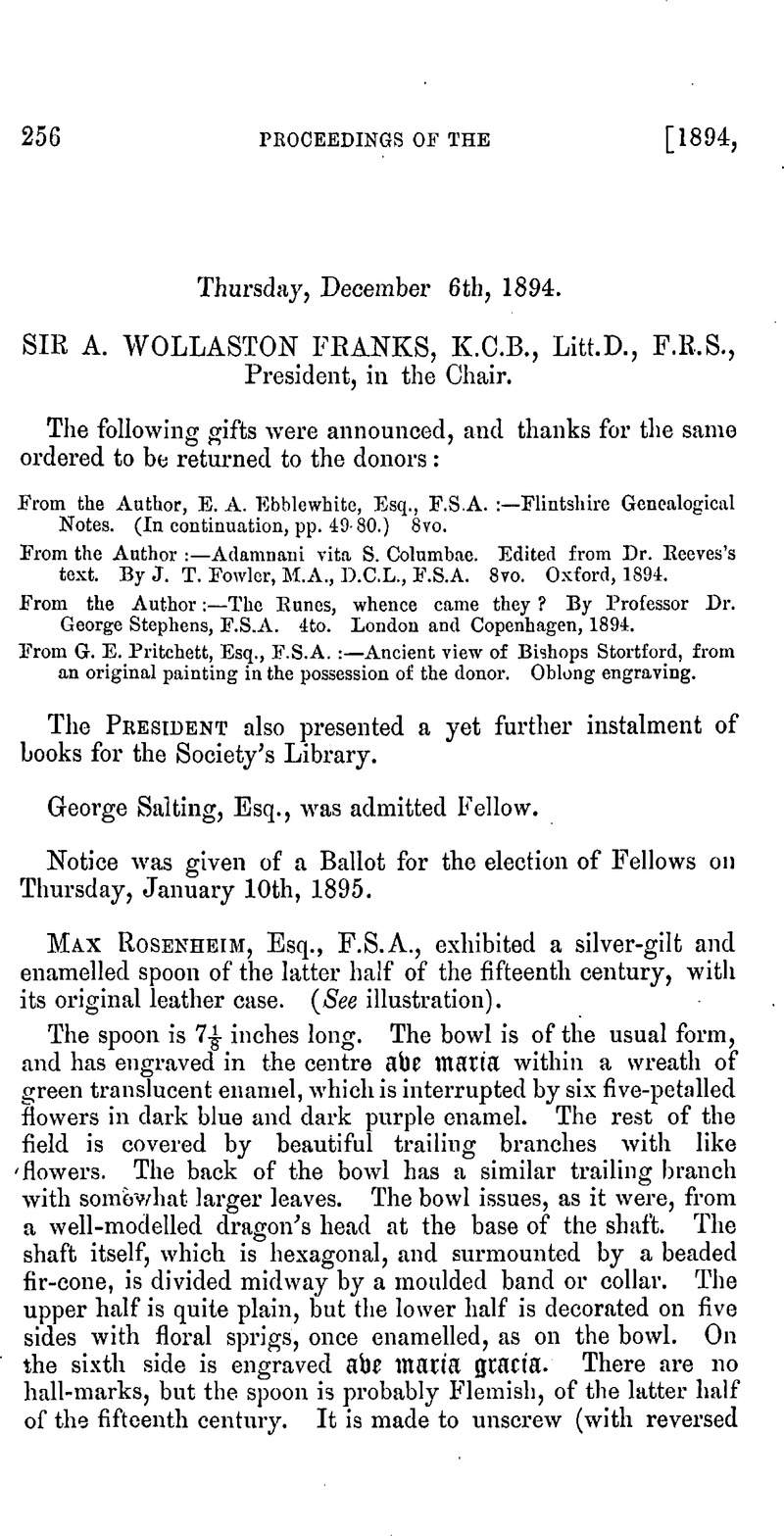No CrossRef data available.
Published online by Cambridge University Press: 10 May 2010

page 259 note * My visit was some time after the photograph, now exhibited, was taken, and many cartloads of stones had been taken away in the interval.
page 260 note * It was the projecting corner of one of these that, on my first visit, I took for part of a cist.
page 260 note † Identified as cannel coal by Mr. J. G. Goodchild, F.G.S., F.Z.S., of H.M. Geological Survey. There is no doubt that these beads were inside the incense cup. It was found by Mr. Potter himself, who carried it to his house without disturbing the earth in it: the beads were raked out afterwards.
page 260 note ‡ Archaeologia, xliii. 328–331.
page 261 note * A full account of this cairn, by Chancellor Ferguson, with illustrations, will be found in Transactions of the Cumberland and Westmorland Antiquarian and Archaeological Society, xiii. 389. The paper also gives a list of all the cup, ring, and groove marked stones in Cumberland and Westmorland.
page 261 note † Transactions of the Cumberland and Westmorland Antiquarian, and Archaeological Society, xii. 365.
page 262 note * Handbook to the York Museum. Eighth edition. Nos. 70 to 73d.
page 262 note † John Hodgson, A History of Northumberland, part ii. vol. iii. p. 221.
page 263 note * For the Gallows Hill and its vicinity see “The Roman Cemeteries of Luguvallium,” Transactions of Cumberland and Westmorland Antiquarian and Archaeological Society, xii. 365.
page 264 note * These are two harpoon-heads of whale's bone from Tierra del Fuego, of precisely the same character as those in use at the present time. Cf. Wood's Natural History of Man, ii. 535. [C.H.R.]
page 264 note † No. 501 on the tithe map.
page 264 note ‡ The bones of a large animal were with them, but were thrown away by the finder.